Windows Phone sales explode in Europe, gain in the US, and pass the iPhone in Italy
Strong sales for Windows Phone is seen across Europe, the United States and Australia, signaling strong momentum for Microsoft’s mobile platform
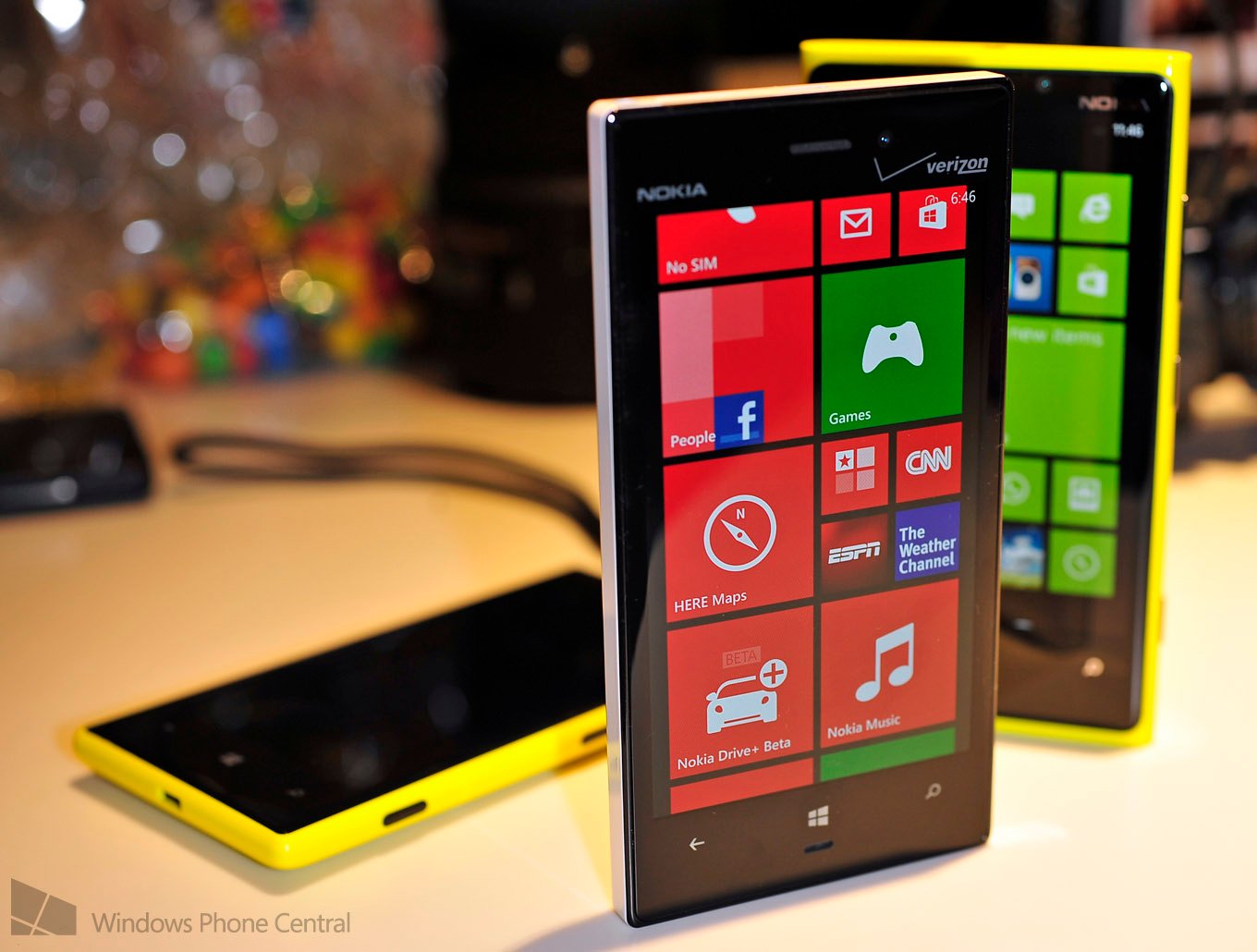
Kantar Worldpanel’s numbers for September 2013 show continued strong growth for Windows Phone, especially in Europe where double digit sales are seen in the Great Britain (11.4%), France (10.7%) and Italy (13.7%). The data collected spans 3 months, up until September.
In terms of sales for September 2013, Windows Phone has claimed 10% for the “big five” European countries combined (UK, Germany, France, Italy and Spain), representing a doubling in sales from 12 months ago, marking a substantial increase from 2012.
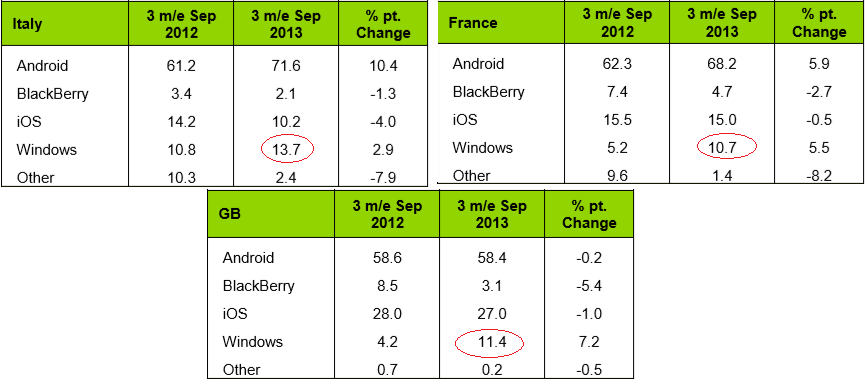
Even bigger news is that sales for Windows Phone has surpassed the iPhone in Italy (13.7% versus 10.2%). Granted, Apple’s iPhone 5s and 5c have just launched and are expected to rebound during the Christmas period, skewing the numbers slightly. However, it’s still a significant accomplishment analogous to the situation in Russia, India and Lithuania where Windows Phone is also doing better than Apple’s legacy smartphone.
United States is finally growing
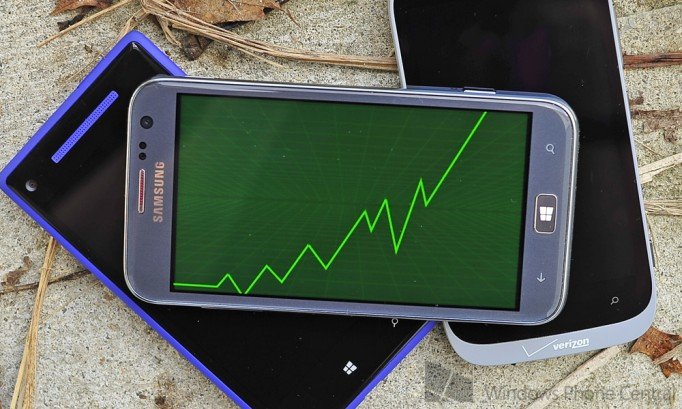
Fascinatingly, even in the United States sales of Windows Phone is nearing 5% versus 2.7% one year ago. That 2% increase in sales shows continued awareness of the Windows Phone operating system, most likely perpetuated by sales of the Lumia 520 and Lumia 521. So far, the United States has established itself as a difficult market for Nokia to gain traction in, but that may be finally changing in late 2013.
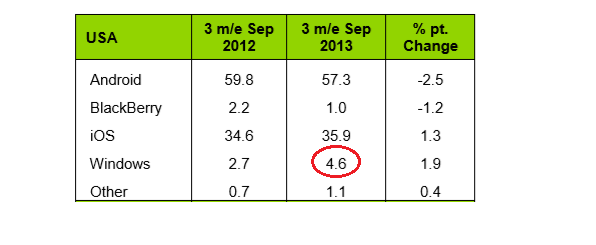
Other numbers in the United States are revealing as Android has dipped 2.5% in sales in 2013, along with an expected decrease for BlackBerry. Only iOS and Windows Phone has shown growth in sales, conceivably signaling a changing tide in the States.
Australia doubles
Australia too has seen momentous growth, ramping up from 4.6% sales in September 2012 to 9.3% one year later, a doubling upsurge in sales. While news from Australia does not garner as much in headlines, it’s still a great sign.
China and local Android brands dominate
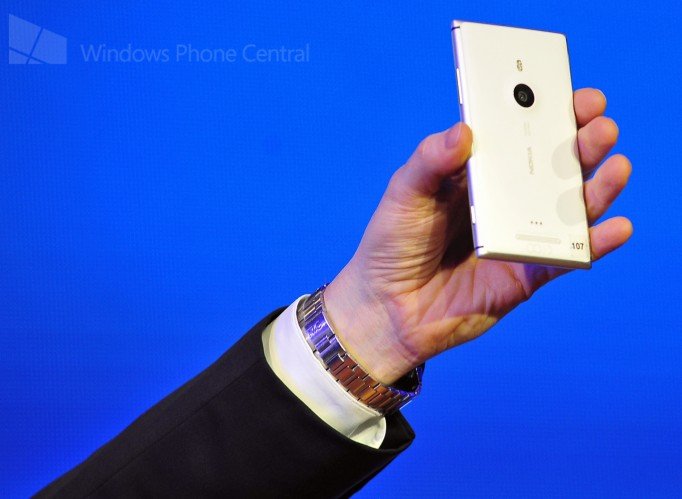
However, not all news is so positive. China, ironically, is providing to be a difficult nut to crack for Nokia, where sales have dropped from 4.5% to just 2.5% in one year.
All the latest news, reviews, and guides for Windows and Xbox diehards.
The momentum in that country is determined by Android and its low cost, native manufacturers, who have home turf advantage over Nokia. Android sales in that country have grown by nearly 15% in one year with BlackBerry, iOS and Windows Phone all dropping.
Potential for Latin America
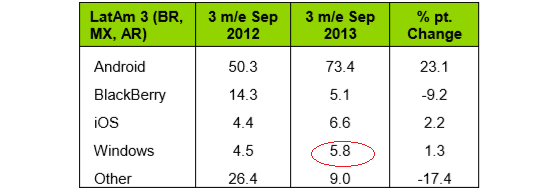
Latin America likewise has seen increased sales for Windows Phone, up 1.3% from last year, however Android is exploding with a record high 23% increase. Even iOS has improved by 2.2%, demonstrating that Latin America is a crucial growth market for smartphones in 2013 and going forward.
Dominic Sunnebo, strategic insight director at Kantar Worldpanel comments:
“Nokia dominated in Latin America for many years, and while its popularity declined with the fortunes of Symbian it now has an opportunity to regain the top-spot. The majority of consumers in Latin America still own a Nokia featurephone and upgrading to an entry level Lumia is a logical next step. Price is the main barrier in developing markets and the budget Lumia 520 opens the door to smartphone ownership for many.”
Indeed, it appears that Windows Phone, and specifically Nokia, is finally catching on in most territories. The news is certainly positive all around as Microsoft’s mobile operating system is seeing increased sales in the US, across Europe, Russia, Australia and Latin America. Its third-place status is not just a default position any longer, instead, Microsoft is now an active player in the smartphone wars.
Source: Kantar Worldpanel

Daniel Rubino is the Editor-in-chief of Windows Central. He is also the head reviewer, podcast co-host, and analyst. He has been covering Microsoft since 2007 when this site was called WMExperts (and later Windows Phone Central). His interests include Windows, laptops, next-gen computing, and wearable tech. He has reviewed laptops for over 10 years and is particularly fond of 2-in-1 convertibles, Arm64 processors, new form factors, and thin-and-light PCs. Before all this tech stuff, he worked on a Ph.D. in linguistics, performed polysomnographs in NYC, and was a motion-picture operator for 17 years.
